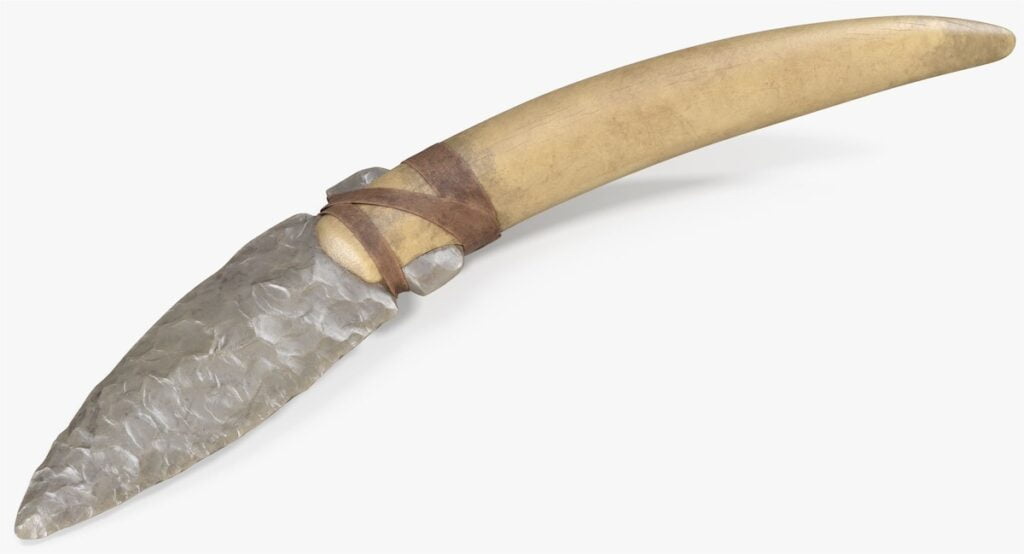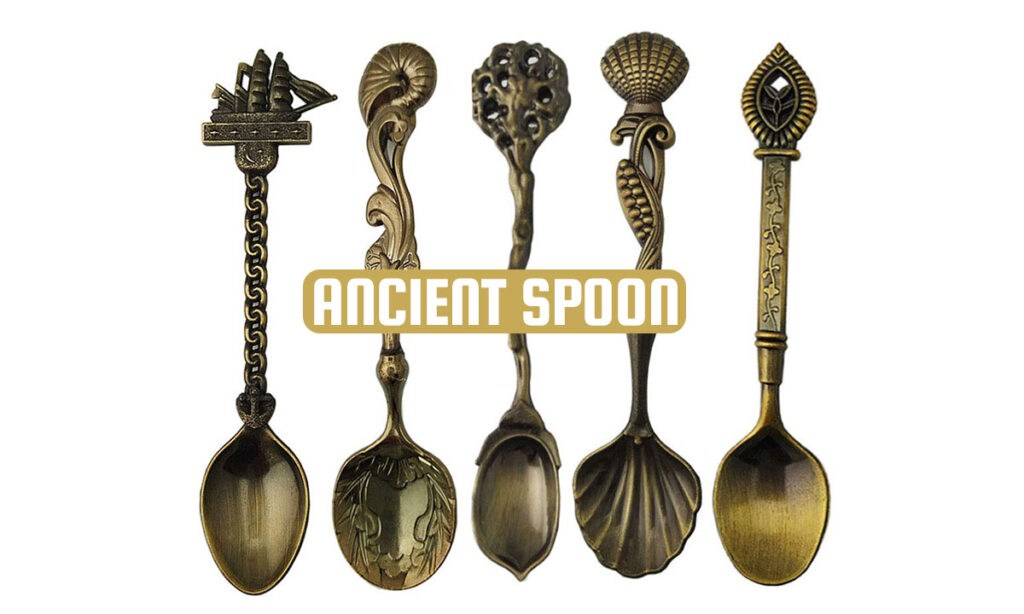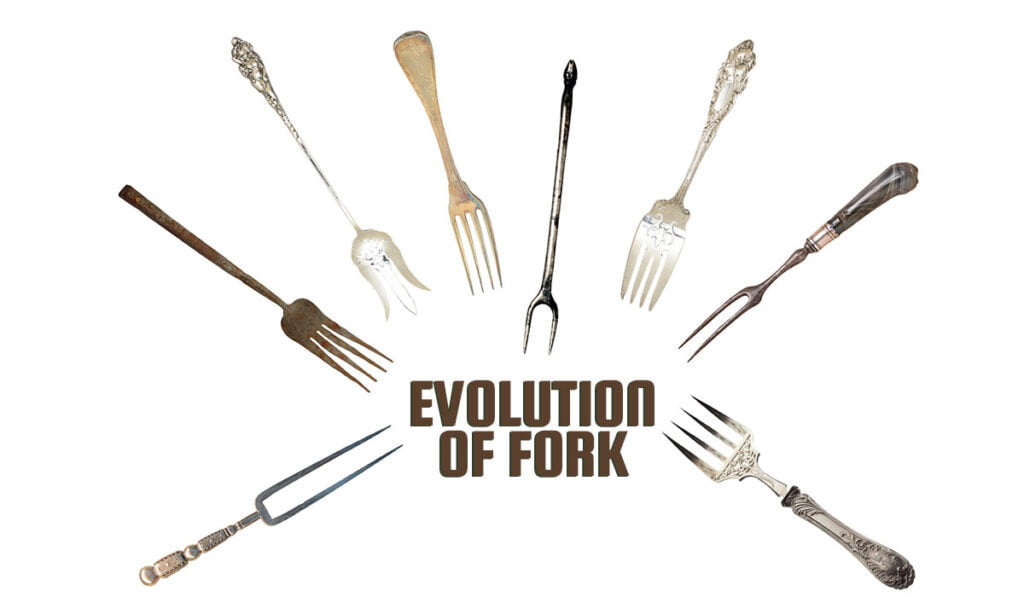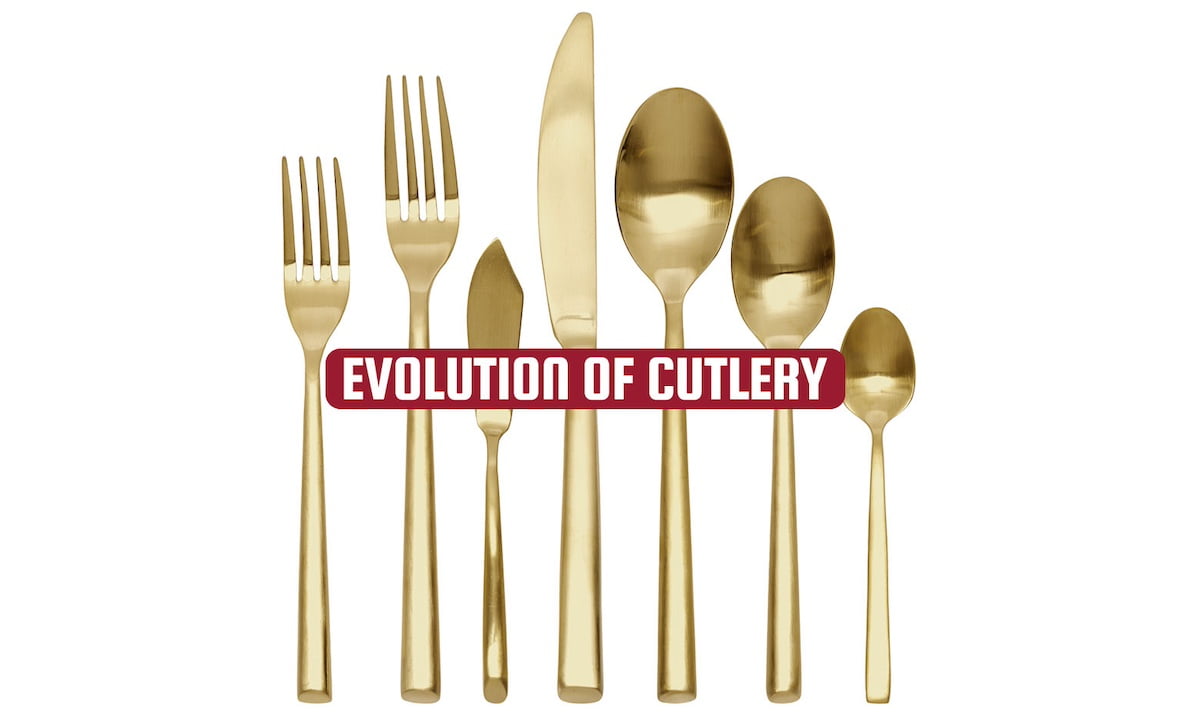I. Cutlery: An Essential Evolution in Human Dining
Cutlery, an everyday fixture in our lives, has a rich history that often goes overlooked. From the basic act of using hands to the sophisticated utensils of today, the evolution of cutlery has been shaped by thousands of years of culinary history. In this exploration, we delve into the fascinating journey of cutlery, tracing its origins, pivotal moments, cultural influences, and its significance in modern times.
In this comprehensive guide, we’ll unravel the mysteries behind the development of cutlery. Starting from its primitive beginnings to its contemporary forms, we’ll uncover the pivotal milestones that shaped its evolution. Buckle up as we embark on a journey through time to understand how cutlery transformed from mere tools to a significant part of human dining culture.
Table of Contents
II. Early Origins of Cutlery

A. Primitive Cutlery: Hands as the First Eating Tools
When our ancient ancestors sought nourishment, their primary eating tools were their hands. However, as civilization advanced, the need for more efficient tools arose. The first substantial step towards cutlery was the emergence of knives.
B. Development of Knives:
In the Paleolithic period, humanity’s earliest tools included sharpened flints and stones, initially used more as weapons than dining implements. As humanity transitioned to the Neolithic era (5000 to 2000 BC), stone blades were affixed to wooden handles, marking a significant step toward the creation of primitive knives.
Metal knives akin to today’s designs soon followed, with iron knives making an appearance around 1000 BC. These developments laid the groundwork for the evolution of knives into essential eating tools.
C. Emergence of Spoons:
While knives evolved, spoons also came into the culinary picture. Initially crafted from shells, animal horns, or wood, these primitive spoons were tools of necessity. The Romans elevated spoon-making, fashioning them from various materials like bone, pewter, bronze, and silver, gradually refining their shapes and designs.

III. The Rise of Table Utensils
A. Historical Perspectives on Cutlery Use:
Throughout history, cutlery’s use has been intertwined with cultural traditions. Different civilizations had unique practices regarding the use of eating utensils, showcasing the diverse roles these tools played in various societies.
B. Evolution of Forks:
Forks, initially met with skepticism, gradually gained popularity. The fork’s journey from a peculiar foreign object to a common tableware item was marked by cultural resistance and eventual acceptance. This evolution sheds light on how cultural norms influenced the adoption of new dining tools.

IV. Cultural and Historical Influences
A. Impact of Cultural Traditions on Cutlery Use
Different cultures wielded distinct practices when it came to dining etiquette and cutlery usage. From the opulent feasts of royalty to the modest dining habits of commoners, cultural influences heavily dictated the manner in which utensils were employed during meals.
B. Shifts in Table Manners and Dining Customs
The evolution of dining customs offers insights into the socio-cultural dynamics of different eras. While some societies embraced new utensils readily, others held onto traditional dining practices, emphasizing the significance of cultural heritage in shaping dining rituals.
V. Technological Advancements and Modernization

A. Innovations in Cutlery Materials:
1. Introduction of Stainless Steel
Stainless steel, a groundbreaking material in cutlery manufacturing, revolutionized the industry. Its corrosion resistance, durability, and ease of maintenance made it an instant favorite among consumers. The inception of stainless steel in the 20th century marked a pivotal moment, allowing for the creation of long-lasting, high-quality utensils.
2. The Era of Modern Cutlery Materials
With time, the landscape of cutlery materials expanded beyond stainless steel. Contemporary materials such as titanium, high-carbon steel, ceramic, and innovative alloys have entered the scene, offering a diverse array of options. Each material brings its unique set of properties, catering to varying preferences regarding aesthetics, performance, and sustainability.
B. Contemporary Cutlery:
1. Recent Developments in Cutlery Design
In recent years, cutlery design has witnessed a surge in creativity and functionality. Designers are exploring ergonomic shapes, sleek finishes, and innovative handle designs, marrying aesthetics with usability. The focus is on creating utensils that not only serve their functional purpose but also elevate the dining experience through innovative and stylish designs.
2. Influence of Technology on Cutlery’s Evolution
Technological advancements have significantly influenced the evolution of cutlery. From traditional manufacturing techniques to the integration of modern machinery, technology has streamlined production processes, resulting in precision-cut utensils with superior quality. Furthermore, advancements in materials science and 3D printing have opened new frontiers for experimenting with shapes, designs, and materials in cutlery production.
The fusion of technology and traditional craftsmanship has paved the way for the emergence of smarter, more durable, and aesthetically appealing cutlery designs, reflecting the dynamism of modern dining culture.
VI. Symbolism and Significance of Cutlery Today
A. Cutlery as a Status Symbol:
1. Cutlery as a Reflection of Status and Luxury
In contemporary society, cutlery extends beyond its functional purpose; it serves as a symbol of status and luxury. The choice of cutlery often reflects personal taste, style, and social standing. Exquisite, intricately designed utensils made from premium materials like silver or artisanal crafted pieces are often associated with opulence and sophistication.
2. Cutlery’s Role in Modern Society
Cutlery plays a multifaceted role in modern society. Beyond its utilitarian function, it contributes to the overall dining experience, enhancing aesthetics and elevating dining occasions. Whether in fine dining establishments, home settings, or social gatherings, the choice of cutlery can set the tone and ambiance, adding a touch of elegance to any meal.
B. Future Prospects:
1. Predictions on Cutlery’s Evolution
The future of cutlery holds intriguing possibilities. Anticipating the evolving preferences of consumers, there’s a likelihood of witnessing a fusion of traditional craftsmanship with modern design sensibilities. Sustainability could also be a driving force, encouraging the adoption of eco-friendly materials and innovative production techniques.
2. Potential Technological Impacts on Cutlery Design
Technology is poised to leave a significant imprint on cutlery design. Advancements such as smart utensils equipped with features like temperature control or self-cleaning properties might become more prevalent. Additionally, the integration of nanotechnology or biodegradable materials could shape the next generation of environmentally conscious cutlery.
The future landscape of cutlery promises an intriguing blend of heritage, innovation, and sustainability, reflecting changing consumer preferences and technological advancements.
VII. Conclusion
A. Summary of Cutlery’s Journey Through History
The journey of cutlery through history unveils a captivating narrative of human ingenuity and cultural evolution. From the primitive tools of early civilizations to the sophisticated and diverse utensils of today, cutlery has mirrored societal changes, technological advancements, and shifting dining customs. Its evolution has been marked by innovation, cultural influences, and the pursuit of both functionality and aesthetics.
B. Reflection on the Ongoing Evolution of Cutlery
As we reflect on the ongoing evolution of cutlery, it becomes evident that its significance transcends mere utility. Cutlery stands as a testament to human creativity, craftsmanship, and adaptability. Its constant evolution reflects our changing lifestyles, preferences, and the influence of technological advancements shaping the way we dine and interact with food.
C. Final Thoughts on Cutlery’s Relevance and Adaptability
In conclusion, the relevance and adaptability of cutlery continue to resonate in modern times. Beyond being tools for eating, cutlery represents cultural heritage, social status, and the convergence of tradition with innovation. Its enduring significance lies in its ability to merge functionality with elegance, catering to the ever-evolving needs and tastes of society.
As we journey forward, the story of cutlery remains an intricate tapestry woven with historical threads and future possibilities, showcasing its enduring role in shaping the way we dine and experience food.

